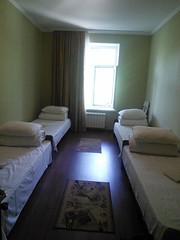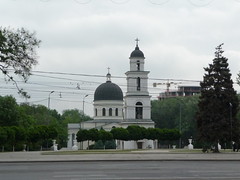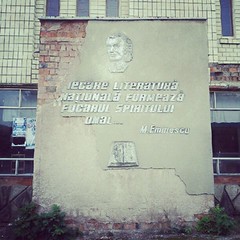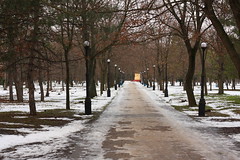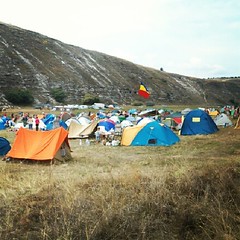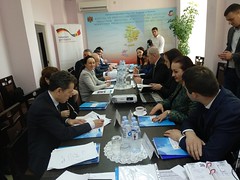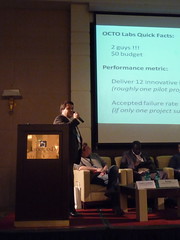 Moldova
Moldova
Moldova (English: /mɒlˈdvə/ , English: /ˈmɒldəvə/ ; Romanian: [molˈdova]), officially the Republic of Moldova (Romanian: Republica Moldova), is a landlocked country in Eastern Europe. It is bordered by Romania to the west and Ukraine to the north, east, and south. The unrecognised state of Transnistria lies across the Dniester river on the country's eastern border with Ukraine. Moldova's capital and largest city is Chișinău.
Most of Moldovan territory was a part of the Principality of Moldavia from the 14th century until 1812, when it was ceded to the Russian Empire by the Ottoman Empire (to which Moldavia was a vassal state) and became known as Bessarabia. In 1856, southern Bessarabia was returned to Moldavia, which three years later united with Wallachia to form Romania, but Russian rule was restored over the whole of the region in 1878. During the 1917 Russian Revolution, Bessarabia briefly became an autonomous state within the Russian Republic. In February 1918, it declared independence and then integrated into Romania later that year following a vote of its assembly. The decision was disputed by Soviet Russia, which in 1924 established, within the Ukrainian SSR, a so-called Moldavian autonomous republic on partially Moldovan-inhabited territories to the east of Bessarabia.
In 1940, as a consequence of the Molotov–Ribbentrop Pact, Romania was compelled to cede Bessarabia and Northern Bukovina to the Soviet Union, leading to the creation of the Moldavian Soviet Socialist Republic (Moldavian SSR). On 27 August 1991, as the dissolution of the Soviet Union was underway, the Moldavian SSR declared independence and took the name Moldova. However, the strip of Moldovan territory on the east bank of the Dniester has been under the de facto control of the breakaway government of Transnistria since 1990. The constitution of Moldova was adopted in 1994, and the country became a parliamentary republic with a president as head of state and a prime minister as head of government.
Moldova is the second poorest country in Europe by GDP per official capita after Ukraine and much of its GDP is dominated by the service sector. It has one of the lowest Human Development Indexes in Europe, ranking 76th in the world (2022). Moldova is a member state of the United Nations, the Council of Europe, the World Trade Organization, the Organization for Security and Cooperation in Europe, the GUAM Organization for Democracy and Economic Development, the Commonwealth of Independent States, the Organization of the Black Sea Economic Cooperation, and the Association Trio. Moldova has been an official candidate for membership in the European Union since June 2022.
Etymology
The name Moldova is derived from the Moldova River ; the valley of this river served as a political centre at the time of the foundation of the Principality of Moldavia in 1359. The origin of the name of the river remains unclear. According to a legend recounted by Moldavian chroniclers Dimitrie Cantemir and Grigore Ureche, Prince Dragoș named the river after hunting aurochs: following the chase, the prince's exhausted hound Molda (Seva) was drowned in the river. The dog's name, given to the river, extended to the principality.
For a short time in the 1990s, at the founding of the Commonwealth of Independent States, the name of the current Republic of Moldova was also spelled Moldavia. After the dissolution of the Soviet Union, the country began to use the Romanian name, Moldova. Officially, the name Republic of Moldova is designated by the United Nations.
History
Prehistory
The prehistory of Moldova covers the period from the Upper Paleolithic which begins with the presence of Homo sapiens in the area of Southeastern Europe some 44,000 years ago and extends into the appearance of the first written records in Classical Antiquity in Greece. In 2010, Oldowan flint tools were discovered at Bayraki that are 800,000–1.2 million years old. During the Neolithic Age, Moldova's territory stood at the centre of the large Cucuteni–Trypillia culture that stretched east beyond the Dniester River in Ukraine and west up to and beyond the Carpathian Mountains in Romania. The people of this civilization, which lasted roughly from 5500 to 2750 BC, practised agriculture, raised livestock, hunted, and made intricately designed pottery.
Antiquity and the early Middle Ages
This area of present-day Moldova was inhabited by ancient Dacians and Moldovans identify themselves with their ancestors. Carpian tribes also inhabited Moldova's territory in the period of classical antiquity. Between the first and seventh centuries AD, the south came intermittently under the control of the Roman and then the Byzantine Empires. Due to its strategic location on a route between Asia and Europe, the territory of modern Moldova experienced many invasions in late antiquity and the Early Middle Ages, notably by Goths, Huns, Avars, Bulgars, Magyars, Pechenegs, Cumans, Mongols and Tatars.
In the 11th century, a Viking by the name of Rodfos was possibly killed in the area by the Blakumen who betrayed him. In 1164, the future Byzantine emperor Andronikos I Komnenos, while attempting to reach the Principality of Halych, was taken prisoner by Vlachs, possibly in the area which now constitutes Moldova.
The East Slavic Hypatian Chronicle (13th century) mentions the Bolohoveni people, who resided on the eastern fringes of Moldovan territory and in the Rus' principalities of Halych, Volhynia and Kyiv; their ethnic origin is disputed by historians. Archaeological research has identified the location of 13th-century fortified settlements in this region. The Bolohoveni disappeared from written chronicles after they were defeated in 1257 by Daniel of Galicia. In the early 13th century, the ''Brodniks'', a possible Slavic–Vlach vassal tribe of Halych, were also present in much of the region's territory.
Founding of the Principality of Moldavia
The Principality of Moldavia began when a Vlach voivode (military leader), Dragoș, arrived in the region of the Moldova River. His people from the voivodeship at Maramureș soon followed. Dragoș established a polity as a vassal to the Kingdom of Hungary in the 1350s. The independence of the Principality of Moldavia came when Bogdan I, another Vlach voivode from Maramureș who had fallen out with the Hungarian king, crossed the Carpathian mountains in 1359 and took control of Moldavia, wresting the region from Hungary. The Principality of Moldavia was bounded by the Carpathian Mountains in the west, the Dniester River in the east, and the Danube River and Black Sea to the south. Its territory comprised the present-day territory of the Republic of Moldova, the eastern eight counties of Romania, and parts of the Chernivtsi Oblast and Budjak region of present-day Ukraine. Locals referred to the principality as Moldova - like the present-day republic and Romania's north-eastern region.
Between Poland and Hungary
The history of what is today Moldova has been intertwined with that of Poland for centuries. The Polish chronicler Jan Długosz mentioned Moldavians as having joined a military expedition in 1342, under King Ladislaus I, against the Margraviate of Brandenburg. The Polish state was powerful enough to counter the Hungarian Kingdom which was consistently interested in bringing the area that would become Moldavia into its political orbit.
Ties between Poland and Moldavia expanded after the founding of the Moldavian state by Bogdan of Cuhea, a Vlach voivode from Maramureș who had fallen out with the Hungarian king. Crossing the Carpathian mountains in 1359, the voivode took control of Moldavia and succeeded in creating Moldavia as an independent political entity. Despite being disfavored by the brief union of Angevin Poland and Hungary (the latter was still the country's overlord), Bogdan's successor Lațcu, the Moldavian ruler also likely allied himself with the Poles. Lațcu also accepted conversion to Roman Catholicism around 1370, but his gesture was to remain without consequences.
Polish influence grows
Petru I profited from the end of the Polish-Hungarian union and moved the country closer to the Jagiellon realm, becoming a vassal of king Jogaila of Poland on 26 September 1387. This gesture was to have unexpected consequences: Petru supplied the Polish ruler with funds needed in the war against the Teutonic Knights, and was granted control over Pokuttya until the debt was to be repaid; as this is not recorded to have been carried out, the region became disputed by the two states, until it was lost by Moldavia in the Battle of Obertyn (1531). Prince Petru also expanded his rule southwards to the Danube Delta. His brother Roman I conquered the Hungarian-ruled Cetatea Albă in 1392, giving Moldavia an outlet to the Black Sea, before being toppled from the throne for supporting Fyodor Koriatovych in his conflict with Vytautas the Great of Lithuania. Under Stephen I, growing Polish influence was challenged by Sigismund of Hungary, whose expedition was defeated at Ghindăoani in 1385; however, Stephen disappeared in mysterious circumstances.
Although Alexander I was brought to the throne in 1400 by the Hungarians (with assistance from Mircea I of Wallachia), this ruler shifted his allegiances towards Poland (notably engaging Moldavian forces on the Polish side in the Battle of Grunwald and the siege of Marienburg), and placed his own choice of rulers in Wallachia. His reign was one of the most successful in Moldavia's history.
Increasing Ottoman influence
For all of his success, it was under the reign of Alexander I that the first confrontation with the Ottoman Turks took place at Cetatea Albă in 1420. A deep crisis was to follow Alexander l's long reign, with his successors battling each other in a succession of wars that divided the country until the murder of Bogdan II and the accession of Peter Aaron in 1451. Nevertheless, Moldavia was subject to further Hungarian interventions after that moment, as Matthia…
Looking for places related to Moldova?
Those are other destinations to find places related to Moldova:



